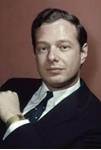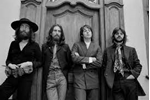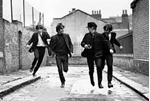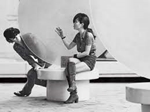- Register
- Log in to Tune-In
- Wishlist (0)
-
Shopping cart
(0)
You have no items in your shopping cart.
Beatles News

Paul McCartney and Taylor Swift will induct new members into the Rock ‘n’ Roll Hall of Fame next week, and actor Angela Bassett will do the honors for Tina Turner. McCartney will speak in honor of Foo Fighters. The former Beatle is close with Foo Fighters frontman Dave Grohl. Swift will speak — and perform — in honor of Carole King. Bassett portrayed Turner in the movie “What’s Love Got to Do With It?” Another actor, Drew Barrymore, is lined up to give the induction speech for the Go-Go’s. Presenters haven’t been announced for Jay-Z or Todd Rundgren.
Source: fortwaynesnbc.com
details

Paul McCartney provided a breakdown of how he constructed the song "Yesterday," one of his most famous compositions for The Beatles, in an excerpt of his forthcoming memoir published in The Times of London.
The 79-year-old wrote that he woke up one morning in his former girlfriend's home with the melody for the song stuck in his mind, and he immediately turned to the piano in the room to memorize the notes.
"I just had this tune, and I now had some chords. And to solidify it in my memory I blocked it out with some dummy words: 'Scrambled eggs, oh my baby, how I love your legs, scrambled eggs.' Using dummy lyrics wasn't something I did a lot. It was a rare thing," he wrote.
Source: Zac Ntim/yahoo.com
details
Paul McCartney has shared an excerpt from his forthcoming book The Lyrics: 1956 To The Present, in which he remembers the inspiration for “Eleanor Rigby.”
“Eleanor Rigby is based on an old lady that I got on with very well,” McCartney wrote in a piece published by The New Yorker. “I found out that she lived on her own, so I would go around there and just chat, which is sort of crazy if you think about me being some young Liverpool guy.
“Later, I would offer to go and get her shopping. She’d give me a list and I’d bring the stuff back, and we’d sit in her kitchen. I still vividly remember the kitchen, because she had a little crystal-radio set […] So I would visit, and just hearing her stories enriched my soul and influenced the songs I would later write.”
Source: Will Schube/yahoo.com
details
The music of The Beatles has arrived on TikTok. Today’s (15) announcement brings dozens of their most loved songs onto the platform and enables millions of listeners worldwide to follow @The Beatles, the new account dedicated to John, Paul, George, and Ringo’s incredible legacy of recorded work together.
The news signals the beginning of #Rocktober, a month-long celebration of rock musicians on TikTok and the greats that paved the way for them. The announcement comes nearly 60 years after the quartet scored their first No.1, and on the day that their remixed and expanded Special Edition of their Let It Be album is released by Apple Corps Ltd./Capitol/UMe.
Source: Paul Sexton/finance.yahoo.com
details
Production gets underway today, 11 October, on Midas Man, a biopic of iconic music manager Brian Epstein, known as ‘the fifth Beatle’. The 12-week shoot takes place in Liverpool, London and the US.
Jonas Åkerlund directs from a screenplay by Jonathan Wakeham, based on a screen story by Brigit Grant.
Kevin Proctor and Perry Trevers produce for StudioPOW alongside Trevor Beattie and Jeremy Chatterton for Trevor Beattie Films and Richard Holmes.
Source: Author: Nia Daniels/kftv.com
details
There are many reasons why Cirque du Soleil’s epic The Beatles LOVE is one of the most popular productions on the Las Vegas Strip and draws an incredible number of repeat visitors. The music goes a long way, of course, presenting some of the most familiar and beloved songs ever recorded. The show is also one of the more family-friendly large-scale presentations in the vast Vegas live entertainment landscape.
But there’s something about LOVE that resonates in a more powerful way. It has often been referred to as one of the most emotional shows in Las Vegas, a meaningful compliment considering the many different ways these colorful productions connect with their audiences. It’s the careful combination of visuals and music that strengthens those ties in LOVE, as well as the dedicated commitment of the show’s brilliant artists and performers.
Source: Brock Radke/Brock Radke
details
Young Ethan Russell decided to become a photographer when he saw Michelangelo Antonioni’s 1966 iconic film “Desire.”
After his father bought him a camera, Russell began exploring the rock scene in his hometown of San Francisco before leaving for London. He didn’t find the swaying scene he wanted to find there, but after a long dry spell he took on the task of taking pictures of John Lennon and Yoko Ono. His photos captured his love for each other, and shortly after, Russell was in the studio and took the photo while the Beatles were recording the album that became “Let It Be.”
These photos (along with Linda McCartney’s photos) are included in Callaway Arts & Entertainment’s new shiny book, The Beatles: Get Back, which will be released on October 12th. This book is a companion to Peter Jackson’s Apple + documentary, revisiting the invisible hours of band footage that captured the band when it broke up. Russell also took the last photo of the group.
Source: californianewstimes.com

James Taylor has spoken about auditioning to join The Beatles‘ label Apple Records in the late 1960s.
The singer-songwriter said in a new interview that he believes his youth – besides his musical talent – helped him have the confidence to sell himself.
“I had some kind of competence and the arrogance of youth, without which nobody would ever do anything, because you’d hedge your bets,” Taylor recalled to GuitarWorld of auditioning in front of Paul McCartney and George Harrison.
“There’s a stage in our development where you’re allowed to do impossible things, which is why the military looks to people about that age. You can talk people into doing things that if you were asked when you were 35, you’d say, ‘No thanks, I’ll pass on that.’
Source: By Charlotte Krol/nme.com
details
Dave Grohl was "mesmerised" when he first met Sir Paul McCartney and Sir Ringo Starr.
The Foo Fighters frontman recalled his meeting with both surviving members of The Beatles in his latest entry on the blog 'Dave's True Stories' and admits that the experience will "forever remain a blur".
Dave recalled being approached by Dhani Harrison - the son of the late Fab Four member George Harrison - to play at a tribute concert to his father at London's Royal Albert Hall in 2002 which led to him meeting his music idols backstage.
The 52-year-old musician said: "I noticed Paul McCartney out of the corner of my eye, chatting away with friends, and I couldn't help but stare. There. He. Was."
Source: insidenova.com
details

Beatlemania might have hit England first, but when The Beatles did their first American tour in 1964, the locals were more than ready to welcome them with open arms. Right away, John Lennon, Paul McCartney, George Harrison, and Ringo Starr noticed something about their American fans—they were all decked out in Beatles merch. Unlike in England, it seemed every fan in the states was sporting at least one official Beatle accessory. In his 1964 column for the Daily Express, Harrison wrote about The Beatles’ first American tour (with the help of Daily Express writer Derek Taylor). He thought the American Beatles fans were decked out head-to-toe in merch because they were naturally enthusiastic.
Source: cheatsheet.com
details
A Hard Day’s Night was The Beatles‘ first movie. That being the case, John Lennon, Paul McCartney, George Harrison, and Ringo Starr were all new to the whole feature film acting process. In an interview with none other than Harrison for BBC Radio, McCartney joked about the trouble the band was having adjusting to performing for the big screen.
The Beatles’ debut feature film, A Hard Day’s Night, came out in 1964. Directed by Richard Lester, the film earned $11 million and is considered one of the great rock-and-roll comedies of its time. A Hard Day’s Night is in the style of a mock documentary that shows a “day in the life” of the Fab Four.
“Over two ‘typical’ days in the life of The Beatles, the boys struggle to keep themselves and Sir Paul McCartney’s mischievous grandfather in check while preparing for a live television performance,” reads the IMDb synopsis.
Source: cheatsheet.com
details
It remains the most analysed break-up in rock history: the one that set the template. When the Beatles split more than 50 years ago and Paul McCartney, John Lennon, George Harrison and Ringo Starr went their separate ways, it was McCartney who shouldered most of the blame.
But now McCartney is setting the record straight for good. “I didn’t instigate the split. That was our Johnny,” he has insisted in a candid and detailed interview to be broadcast later this month.
Recalling what he sees as the “most difficult period of my life”, McCartney, who celebrates his 80th birthday next summer, reveals he wanted the group to go on, especially as after just eight years together, they were still creating “pretty good stuff”. “Abbey Road, Let It Be, not bad,” he will argue in an upcoming episode of the new BBC Radio 4 interview series This Cultural Life. “This was my band, this was my job, this was my life, so I wanted it to continue.”
Source: Vanessa Thorpe/theguardian.com
details
Paul McCartney and his third wife Nancy Shevell celebrated ten years of marriage on Saturday, and the former Beatle marked the occasion by sharing a rare photo of the two of them together.n the snap, Paul, 79, could be seen smiling at the camera while Nancy, 61, rests her head on his shoulder. Posting the photo to Instagram, he captioned it: "10 beautiful years together. Happy Anniversary to my lovely wife. - Paul"The happy couple first met over 30 years ago when they shared neighbouring properties in the Hamptons on New York's Long Island. The pair recently returned to the States after spending most of the lockdown in the English countryside with Paul's daughter Mary and her children.
Source: Eve Crosbie/hellomagazine.com
details
As John & Yoko Ono Lennon's paean for peace, "Imagine," continues to celebrate its 50th anniversary, the iconic song has just been certified triple platinum by the RIAA for selling 3 million units in the U.S. The achievement comes on the eve of what would have been John's 81st birthday this Saturday, October 9th.
As John & Yoko Ono Lennon’s paean for peace, “Imagine,” continues to celebrate its 50th anniversary, the iconic song has just been certified triple platinum by the RIAA for selling 3 million units in the U.S. The achievement comes on the eve of what would have been John’s 81st birthday this Saturday, October 9th.
"John and I were both artists and we were living together, so we inspired each other. The song 'Imagine' embodied what we believed together at the time. John and I met – he comes from the West and I come from the East – and still we are together. We have this oneness and 'the whole world would eventually become one' is the sense that we will all be very happy together. All these instructions are for people for how to spend eternity, because we have lots of time."
Source: fox8live.com

BEATLES STAR JOHN Lennon would have turned 81 today.
Lennon formed part of the ‘Fab Four’, arguably the most influential band of all time. All four members contributed to the band in their own way.
Lennon’s songwriting collaboration with Paul McCartney is widely regarded as the most successful partnership music has seen.
Lennon was killed in 1980 with his bandmate George Harrison passing away in 2001 leaving only McCartney and Starr the surviving members of the group.
So today we’re asking: Who’s your favourite Beatle?
Source: The Journal
details
